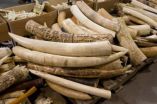(Press-News.org) URBANA, Ill. – If the hottest new plant grown as a biofuel crop is approved based solely on its greenhouse gas emission profile, its potential as the next invasive species may not be discovered until it's too late. In response to this need to prevent such invasions, researchers at the University of Illinois have developed both a set of regulatory definitions and provisions and a list of 49 low-risk biofuel plants from which growers can choose.
Lauren Quinn, an invasive plant ecologist at U of I's Energy Biosciences Institute, recognized that most of the news about invasive biofuel crops was negative and offered few low-risk alternatives to producers. She and her colleagues set out to create a list of low-risk biofuel crops that can be safely grown for conversion to ethanol but realized in the process that regulations were needed to instill checks and balances in the system.
"There are not a lot of existing regulations that would prevent the planting of potentially invasive species at the state or federal levels. For example, there are currently only four states (Florida, Mississippi, Oregon, and Maryland) that have any laws relating to how bioenergy crops can be grown and that include any language about invasive species—and, for the most part, when those words do appear, they are either not defined or poorly defined," said Quinn.
In approving new biofuel products, Quinn said that the EPA doesn't formally consider invasiveness at all – just greenhouse gas emissions related to their production. "Last summer, the EPA approved two known invaders, Arundo donax (giant reed) and Pennisetum purpurem (napier grass), despite public criticism," added U of I professor of agricultural law A. Bryan Endres, who co-authored the research to define legislative language for potentially invasive bioenergy feedstocks.
Part of the problem is that there is no clear scientific definition of what it means to be invasive. The team of researchers used fundamental biological, ecological, and management principles to develop definitions for terminology commonly used to describe invasive species.
"Our definition of invasive is 'a population exhibiting a net negative impact or harm to the target ecosystem,' for example," Quinn said. "We want to establish guidelines that will be simple for regulators and informed by the ecological literature and our own knowledge. We also need to recognize that some native plants can become weedy or invasive. It's complicated and requires some understanding of the biology of these plants."
Quinn said that ideally the definitions and suggested regulations could become part of a revised Renewable Fuels Standard administered by EPA, which would require Congress to make the changes. The proposed regulations could also be adopted at the state level.
"Some of the biofeedstocks currently being examined by the EPA for approval, like pennycress, have a high risk for invasion," Quinn said. "Others have vague names such as jatropha with no species name, which is problematic. For example, there are three main Miscanthus species but only sterile hybrid Miscanthus × giganteus types are considered low risk. However, the EPA has approved "Miscanthus" as a feedstock without specifying a species or genotype" Quinn said. "That's fine for the low-risk sterile types but could mean higher-risk fertile types could be
approved without additional oversight."
According to Quinn, the white list, which includes 49 low-risk feedstock plants, will serve to clear up the confusion about plant names. The list was developed using an existing weed risk assessment protocol, which includes 49 questions that must be asked about a particular species based on its biology, ecology, and its history of being invasive in other parts of the world.
"Those questions are difficult to answer for new taxa, including plants that haven't been around long or have just recently been developed by breeders," Quinn said. "This will be the first time that they are out in the environment so we don't know what their potential for invasiveness is. But the white list offers plenty of choices of plants that are already commercially available, and the feedstocks on the list have a number of different industrial uses."
Quinn stressed that the native plants that are included in the white list are only recommended as the native genotypes grown in their native region, because although a plant may be native to a part of the United States, it could be considered invasive if grown in a different region.
"For example, Panicum virgatum is the variety of switchgrass that is low risk everywhere except for the three coastal states of Washington, Oregon, and California, but future genotypes that may be bred with more invasive characteristics, such as rapid growth or prolific seed production, may have higher risk."
The researchers believe that the white list provides producers with clearly identified low-invasion risk options and may reduce conflicts between objectives for increasing renewable fuel production and reducing unintended impacts and costs resulting from the propagation of invasive plants.
INFORMATION:
"Resolving regulatory uncertainty: legislative language for potentially invasive bioenergy feedstocks" was published in an issue of GCB Bioenergy.
Co-authors include Elise Scott and James McCubbins from the Energy Biosciences Institute, A. Bryan Endres and Thomas Voigt from the University of Illinois, and Jacob Barney from Virginia Tech.
"Bioenergy feedstocks at low risk for invasion in the U.S.: A 'white list' approach" was published in Bioenergy Research. Co-authors include Aviva Glaser from the National Wildlife Federation, Doria Gordon from the Nature Conservancy, and Deah Lieurance and Luke Flory from the University of Florida.
Funding for both research projects was provided in part by the Energy Biosciences Institute at the University of Illinois.
Regulations needed to identify potentially invasive biofuel crops
2014-08-07
ELSE PRESS RELEASES FROM THIS DATE:
Peer-reviewed paper says all ivory markets must close
2014-08-07
NEW YORK (August 7, 2014) – The message is simple: to save elephants, all ivory markets must close and all ivory stockpiles must be destroyed, according to a new peer-reviewed paper by the Wildlife Conservation Society. The paper says that corruption, organized crime, and a lack of enforcement make any legal trade of ivory a major factor contributing to the demise of Africa's elephants.
Appearing in the August 7th online edition of the journal Conservation Biology, the paper says that if we are to conserve significant wild populations of elephants across all regions ...
Carnegie Mellon's new programming language accommodates multiple languages in same program
2014-08-07
PITTSBURGH—Computer scientists at Carnegie Mellon University have designed a way to safely use multiple programming languages within the same program, enabling programmers to use the language most appropriate for each function while guarding against code injection attacks, one of the most severe security threats in Web applications today.
A research group led by Jonathan Aldrich, associate professor in the Institute for Software Research (ISR), is developing a programming language called Wyvern that makes it possible to construct programs using a variety of targeted, ...
Stock prices of companies that use the same underwriter tend to move together
2014-08-07
HOUSTON – (Aug. 7, 2014) – The stock prices of companies that use the same lead underwriter during their equity offerings tend to move together, according to a new study by financial economics experts at Rice University and the University of Alabama.
"We tested the hypothesis that investment banking networks affect stock prices and trading behavior," said James Weston, a professor of finance at Rice's Jones Graduate School of Business. "Consistent with the notion that investment banks such as Goldman Sachs and Merrill Lynch serve as information hubs for segmented groups ...
Elderly with depression, mild cognitive impairment more vulnerable to accelerated brain aging
2014-08-07
PITTSBURGH, Aug. 7, 2014 – People who develop depression and mild cognitive impairment (MCI) after age 65 are more likely to have biological and brain imaging markers that reflect a greater vulnerability for accelerated brain aging, according to a study conducted by researchers at the University of Pittsburgh School of Medicine. The findings were published online in Molecular Psychiatry.
Older adults with major depression have double the risk of developing dementia in the future compared with those who have never had the mood disorder, said senior investigator Meryl A. ...
Largest cancer genetic analysis reveals new way of classifying cancer
2014-08-07
Researchers with The Cancer Genome Atlas (TCGA) Research Network have completed the largest, most diverse tumor genetic analysis ever conducted, revealing a new approach to classifying cancers. The work, led by researchers at the UNC Lineberger Comprehensive Cancer Center at the University of North Carolina at Chapel Hill and other TCGA sites, not only revamps traditional ideas of how cancers are diagnosed and treated, but could also have a profound impact on the future landscape of drug development.
"We found that one in 10 cancers analyzed in this study would be classified ...
Physical fitness can help prevent young adolescents' depression, study finds
2014-08-07
WASHINGTON – Physically fit sixth-graders – especially girls – are less likely to report feeling depressed when they reach seventh grade, according to a study presented at the American Psychological Association's 122nd Annual Convention.
Even when researchers considered existing symptoms of depression and weight, sixth-grade girls who performed better on a cardiorespiratory fitness test were less likely to feel depressed when they were surveyed again in seventh grade. There was a smaller but similar effect on boys' depression, according to the findings presented by Camilo ...
Fundamental plant chemicals trace back to bacteria
2014-08-07
MADISON, Wis. — A fundamental chemical pathway that all plants use to create an essential amino acid needed by all animals to make proteins has now been traced to two groups of ancient bacteria. The pathway is also known for making hundreds of chemicals, including a compound that makes wood strong and the pigments that make red wine red.
"We have been trying to unravel the source of the phenylalanine amino acid for some time," says Hiroshi Maeda, an assistant professor of botany at the University of Wisconsin-Madison. "Plants use this pathway to make natural products ...
Cell mechanics may hold key to how cancer spreads and recurs
2014-08-07
CHAMPAIGN, Ill. — Cancer cells that break away from tumors to go looking for a new home may prefer to settle into a soft bed, according to new findings from researchers at the University of Illinois.
Some particularly enterprising cancer cells can cause a cancer to spread to other organs, called metastasis, or evade treatment to resurface after a patient is thought to be in remission. The Illinois team, along with colleagues in China, found that these so-called tumor-repopulating cells may lurk quietly in stiffer cellular environments, but thrive in a softer space. The ...
Climate warming may have unexpected impact on invasive species, Dartmouth study finds
2014-08-07
Rising temperatures may be seen as universally beneficial for non-native species expanding northward, but a Dartmouth College study suggests a warmer world may help some invaders but hurt others depending on how they and native enemies and competitors respond.
The study, which sheds light on the uncertain relationship between climate change and invasive species, appears in the journal Ecology. A PDF of the study is available on request.
Climate change and invasive species rank among the largest predicted threats to global ecosystems over the next century, but they are ...
Part of the brain stays 'youthful' into older age
2014-08-07
At least one part of the human brain may be able to process information the same way in older age as it does in the prime of life, according to new research conducted at the University of Adelaide.
A study compared the ability of 60 older and younger people to respond to visual and non-visual stimuli in order to measure their "spatial attention" skills.
Spatial attention is critical for many aspects of life, from driving, to walking, to picking up and using objects.
"Our studies have found that older and younger adults perform in a similar way on a range of visual ...


